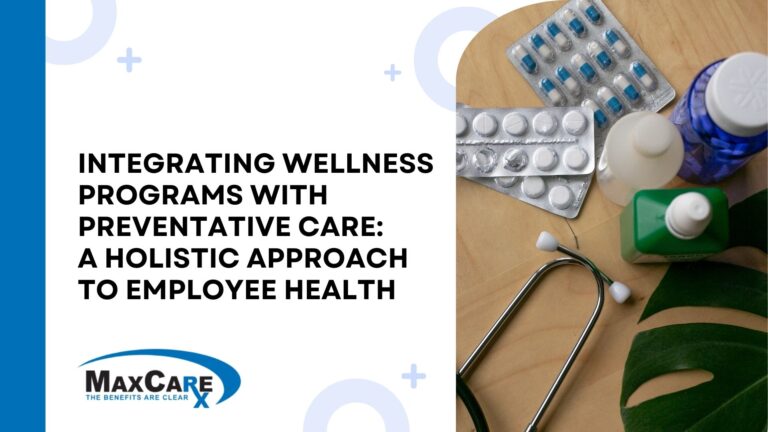While not initially designed for weight loss, Ozempic and Wegovy have gained attention for their unintended yet beneficial side effects of aiding weight loss. On the other hand, Mounjaro, although not specifically categorized as a weight loss medication, is also attracting interest within the healthcare community for its unique properties in addressing specific health conditions. While further studies may be needed to understand the full extent of its effects on weight management, Mounjaro’s emergence in medical discussions indicates a growing interest in its potential health benefits beyond its originally intended use.
These medications have broken out of the realm of healthcare discussions and entered the mainstream via social media platforms. On Instagram, Twitter, and TikTok, users share their personal testimonials, detailing their experiences with these medications, including weight loss journeys and the challenges faced along the way.
The high visibility of these medications aligns with increased prescriptions and interest, but it also raises concerns about the potential for misinformation and the pressure it may put on the supply of these drugs. Let’s explore the current state of weight-loss pharmacotherapy and evaluate the implications for employer-sponsored healthcare.
The Rise of GLP-1 Medications
GLP-1 (glucagon-like peptide-1) medications, such as Ozempic, represent a class of drugs initially developed to improve blood sugar control in individuals with type 2 diabetes. These medications work like a naturally existing hormone called GLP-1, which helps control your hunger and how much you eat by boosting insulin release, blocking the production of a sugar-raising hormone called glucagon, and slowing down how fast your stomach empties food. In simple terms, they help keep your blood sugar levels in check and manage your appetite effectively. Wegovy is a higher-dose version of Ozempic specifically approved for chronic weight management, working similarly by helping users feel full sooner and eat less.
The therapeutic mechanism of GLP-1 medications revolves around increasing insulin secretion and curbing appetite, which together contribute to weight loss. Mounjaro (tirzepatide) is a newer medication by Eli Lilly also approved for type 2 diabetes that combines the actions of GLP-1 (glucagon-like peptide-1) and GIP (gastric inhibitory polypeptide) to improve blood sugar control and promote weight loss.
While these medications were first approved for the management of diabetes, their weight-reducing side effects have gained attention, leading to their use in obesity management.
Soaring Popularity in the Public Eye
Influence of Public Figures
The conversation surrounding GLP-1 medications has been further amplified by the involvement of celebrities and public figures who have candidly shared their experiences with these drugs. The impact of this visibility cannot be underestimated; when influencers and celebrities talk, people listen — and often, they act. This trend has likely contributed to a sharper curve in interest and requests for these medicines.
Media Portrayal and Public Perception
Television programs, from news segments to talk shows, have picked up on the trend, offering a platform for discussion about the effectiveness and safety of these medications. The media coverage has served to both educate and stir public curiosity, leading to increased awareness and, consequently, a surge in interest.
The Numbers Speak: Prescribing Patterns on the Rise
During the last quarter of 2022, US healthcare providers issued over nine million prescriptions for diabetes and obesity drugs, including Ozempic, Wegovy, and Mounjaro—a 300% increase since early 2020, as reported by Trilliant Health. Ozempic, especially, experienced significant off-label use for weight loss, accounting for over 65% of these prescriptions due to its appetite-suppressing effects while representing the popularity of the GLP-1 treatment class. Although prescriptions were tracked from insurance claims data, the actual number may be higher as some weight loss treatments aren’t covered by health plans, forcing patients, including celebrities and wealthy individuals, to pay out-of-pocket— with Ozempic and Wegovy costing upwards of $900 and $1,300 respectively.
According to a recent news report by Reuters citing information from U.S. insurance claims data, in 2023, a significant number of U.S. adolescents between the ages of 12 and 17 began using Wegovy. Comparing to only 25 prescriptions in 2022, at least 1,268 children started treatment with the drug following its approval for adolescents and the American Academy of Pediatrics’ recommendation.
NBC reports that demand for weight loss drugs is expected to stay strong into 2024 and could foster a $100 billion market by the end of the decade. As Novo Nordisk and Eli Lilly, the current market leaders, anticipate regulatory approvals and potential new uses for their drugs that could boost sales and insurance coverage, supply constraints, especially for Novo Nordisk’s Wegovy and Eli Lilly’s Mounjaro, remain a concern.
The Clinical Rundown: Benefits and Side Effects
Weighing the Pros
When assessing the benefits of these medications, the positives extend beyond mere weight loss. Patients often experience a cascade of health improvements including enhanced cardiovascular health, which encompasses better heart and blood vessel function, which may lead to decreased risk of heart-related events in certain populations. The weight loss attributed to these medications also typically results in improved glycemic control, making them particularly beneficial for individuals with type 2 diabetes, as they help in maintaining more stable blood sugar levels.
Furthermore, by shedding excess weight, patients tend to reduce their risk of developing secondary weight-related health issues, such as joint stress or metabolic syndrome. All these factors can contribute to a substantially improved quality of life and may positively alter long-term health outcomes.
Adverse Events to Consider
On the flip side, patients should also be aware of the various adverse events associated with GLP-1 medications. Common side effects often involve gastrointestinal issues, which include nausea, vomiting, diarrhea, and constipation. These symptoms can sometimes be transient and may resolve as the body adjusts to the medication. However, some patients may experience more severe side effects, which could involve renal impairment or kidney problems, gallbladder disorders, such as gallstones or cholecystitis, and pancreatitis.
Given the range and severity of possible side effects, it becomes clear that engaging in treatment with GLP-1 medications should be done under strict medical supervision. This ensures that any adverse reactions are closely monitored and managed, and the patient’s overall treatment plan is adjusted as necessary to maintain safety and efficacy.
Understanding the Limitations: Knowledge Gaps in GLP-1 Treatments
While there is optimism surrounding the impact of GLP-1 medications on weight loss, understanding their role in long-term health management is still evolving. These medications should ideally be integrated into a broader weight management plan that emphasizes a healthy lifestyle for enduring results. Let’s explore the knowledge gaps and long-term efficacy aspects of GLP-1 medications.
- Longitudinal Research: There’s a significant need for more long-term studies to evaluate the extended impact of GLP-1 medications. While initial weight loss results are promising, the scientific community is still determining the full extent of their long-term efficacy.
- Sustainability Post-Treatment: The data on what happens after patients discontinue GLP-1 medications is sparse. It appears that some patients experience weight regain, which raises questions about the permanence of the weight loss achieved.
Ensuring Lasting Benefits: The Role of Comprehensive Management
Beyond Medication: GLP-1 medications tend to be most effective when used in conjunction with lifestyle interventions. Long-term weight management likely requires a holistic approach, rather than reliance on medication alone.
- Lifestyle Integration: A successful strategy for sustained health improvement should include:
- Balanced nutrition
- Consistent physical activity
- Behavioral changes
- Personalized Plans: Each individual’s response to GLP-1 medications may vary, which underscores the necessity for personalized treatment plans tailored to their specific needs and circumstances.
The Employer’s Dilemma: Covering Weight Loss Medications
Obesity is a surging health crisis, with profound implications for medical costs and overall health. Over the last few decades, the prevalence of obesity has increased drastically, exerting added strain on healthcare systems. Medical costs for individuals with obesity are notably higher compared to those maintaining a healthy weight, often due to associated health complications like cardiovascular diseases, diabetes, and joint disorders. For employers, the decision to include weight-loss medications in healthcare benefits involves a complex analysis.
Pros and Cons of Covering Weight Loss Medications
Exploring the potential impact of covering weight loss medications like GLP-1s for employees involves a thorough analysis of pros and cons from a cost-benefit perspective.
Pros of Covering Weight Loss Medications:
- Preventive Health Measures: By covering weight loss medications, employers might reduce the risk of obesity-related health complications in their workforce, potentially leading to lower overall medical costs.
- Improved Employee Health: Effective weight management can lead to better employee health, resulting in fewer sick days, enhanced productivity, and improved morale.
- Reduced Need for Surgical Interventions: Coverage of weight loss medications could decrease the number of employees needing costly bariatric surgery and its associated risks and recovery time.
- Attractive Benefits Package: Offering such benefits can make the company more attractive to prospective employees and assist in retention efforts.
Cons of Covering Weight Loss Medications:
- Initial Cost Outlay: The direct costs of covering these medications can be substantial, given their high price points and the need for potentially indefinite treatment.
- Complexity in Administration: Determining eligibility for coverage could be complicated, requiring clear policies on who qualifies and under what circumstances.
- Potential for Non-Compliance: Without a comprehensive health strategy, employees may not adhere to lifestyle changes necessary for the medication to be effective.
- Long-Term Efficacy Uncertainty: There needs to be more data on the long-term efficacy of these medications, which could affect their cost-effectiveness as a coverage option.
Cost-Benefit Analysis
Evaluating whether covering weight loss medications leads to a reduction in medical expenses depends on several factors:
- The obesity rate within the employee population
- The incidence of obesity-related health conditions currently contributing to medical spend
- The cost comparison between long-term medication coverage and potential savings from a reduction in obesity-related conditions and surgeries
Employers might benefit from consulting with healthcare analysts to estimate potential savings from improved employee health against the costs of covering GLP-1 medications. It is also worth considering implementing a pilot program to gauge the efficacy and return on investment of such an initiative.
Medical Disclaimer
GLP-1 weight-loss medications stand out as a promising tool. However, the complexities of their use, coupled with the evolving nature of research, remind stakeholders to approach this healthcare solution with discernment and vigilance.
This content is for informational purposes only and should not be taken as professional medical advice. Always consult with healthcare professionals to determine the best course of action pertaining to treatments and health concerns.



